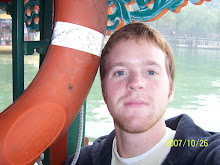 Originally, my goal was to find one of two lizards that has continually eluded me: either the granite night lizard or the California legless lizard. It seems as though these tricky reptiles have once again given me the slip. Although I'll have to await a future day to find them, I did manage to get some great finds in to boost my spirits and fill my herping cantine until spring and summer roll around.
Originally, my goal was to find one of two lizards that has continually eluded me: either the granite night lizard or the California legless lizard. It seems as though these tricky reptiles have once again given me the slip. Although I'll have to await a future day to find them, I did manage to get some great finds in to boost my spirits and fill my herping cantine until spring and summer roll around.One morning Devin and I drove to the Lake Perris area and around Moreno Valley to hike the foothills and explore the granite crevices for granite night lizards. No such luck this time. Our efforts, however, would yield other herps like side-blotched lizards, western fence lizards, granite spiny lizards, western skinks, California slender salamanders, and Pacific treefrogs. In addition, we'd see centipedes, millipedes, a small tarantula, and a scorpion. Our best find of the day was a lyre snake found under a slab of granite rock. I had never found a lyre snake before, so seeing this secretive, mildly venemous night dweller was a herp I was proud to check off the list.
 California slender salamander
California slender salamander Western skink
Western skink Side-blotched lizard
Side-blotched lizard
Lyre snake
 The next day, Devin and I returned to the hills to release the lyre snake and do some additional herping. Lo and behold, not long after the release we spotted a large red-diamond rattlesnake curled beneath a bush against a large boulder. The snake was about 30 inches or more, but about 5 feet from the first snake, we found another red-diamond that was even larger.
The next day, Devin and I returned to the hills to release the lyre snake and do some additional herping. Lo and behold, not long after the release we spotted a large red-diamond rattlesnake curled beneath a bush against a large boulder. The snake was about 30 inches or more, but about 5 feet from the first snake, we found another red-diamond that was even larger.
 Our adrenaline was pumping after finding two large rattlesnakes, so we kept working our way around the side of the hill, trying to stay on the sunny slopes. The sun was dipping low in the sky and our shadows were getting long. We'd only herp for a few more minutes before heading back. I jumped onto a boulder, looked down off the back side, and stretched out below me on the ground was a beautiful rosy boa.
Our adrenaline was pumping after finding two large rattlesnakes, so we kept working our way around the side of the hill, trying to stay on the sunny slopes. The sun was dipping low in the sky and our shadows were getting long. We'd only herp for a few more minutes before heading back. I jumped onto a boulder, looked down off the back side, and stretched out below me on the ground was a beautiful rosy boa. 
 I'd say it turned out to be a pretty decent herp trip, considering the fact that we weren't out but a couple hours each day. I was able to check herps off my holiday wish list that I had not seen before, get some good photos, and rejuvinate my herping spirit that will have to remain in hibernation once I return to the wintry wonderland of central Utah.
I'd say it turned out to be a pretty decent herp trip, considering the fact that we weren't out but a couple hours each day. I was able to check herps off my holiday wish list that I had not seen before, get some good photos, and rejuvinate my herping spirit that will have to remain in hibernation once I return to the wintry wonderland of central Utah.  With blue jeans rolled to the shins, we would tiptoe from rock to rock while peering into the clear, still water for signs of life. Occasionally, a larger wave would spill over sending us several paces back to shore to avoid soaking our shoes and socks. Eager for some interesting finds, we'd hop back and begin overturning rocks, moving aside kelp, and sifting our hands through the sandy bottoms of the pools.
With blue jeans rolled to the shins, we would tiptoe from rock to rock while peering into the clear, still water for signs of life. Occasionally, a larger wave would spill over sending us several paces back to shore to avoid soaking our shoes and socks. Eager for some interesting finds, we'd hop back and begin overturning rocks, moving aside kelp, and sifting our hands through the sandy bottoms of the pools. 




 Our list of critters includes the following: a shore crab (first picture), brittlestars (2nd and 5th pics--the two pics possibly represent different species), a small, unusual looking fish (3rd), and a kelp crab (4th). Also caught, but unphotographed include: a couple large purple sea slugs, a small black-and-yellow sea slug, several snails, hermit crabs, another fish specie, small shrimp, and what seemed to be a baby lobster.
Our list of critters includes the following: a shore crab (first picture), brittlestars (2nd and 5th pics--the two pics possibly represent different species), a small, unusual looking fish (3rd), and a kelp crab (4th). Also caught, but unphotographed include: a couple large purple sea slugs, a small black-and-yellow sea slug, several snails, hermit crabs, another fish specie, small shrimp, and what seemed to be a baby lobster.







